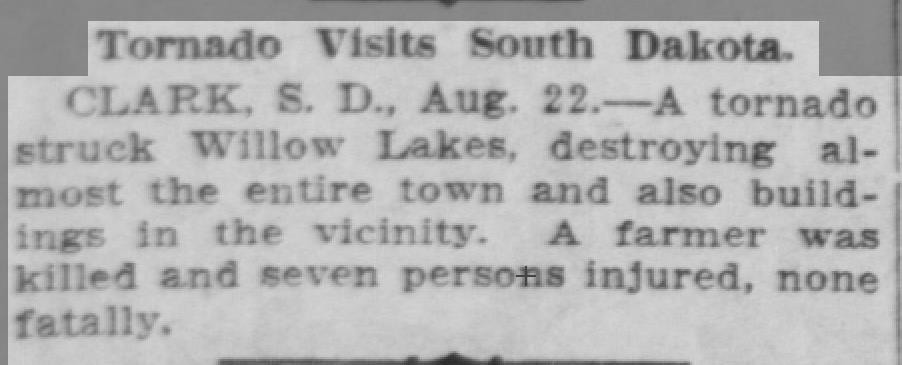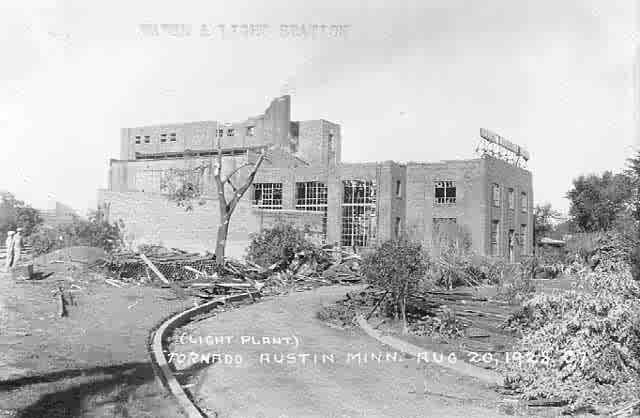
A clipper storm will drop south from Canada today bringing wintry weather from the Upper Midwest to the Great Lakes through Friday. This system is expected to bring strong northerly winds to much of the northern and central High Plains this afternoon through Friday, with gusts up to 60 mph expected. Read More >
Weather History - August 20th
Local and Regional Events:
August 20, 1904:
A destructive, estimated F4 tornado moved ESE from 7 miles WNW of Willow Lake, through the town, and on into Bryant in Hamlin County, South Dakota. Most of the damaged occurred in those two towns. All buildings on at least three farms were blown away. One woman died in Bryant as the tornado swept across the residential west side of town. Another man was killed just west of Willow Lake, as his farm house was scattered for miles.

The image is courtesy of the California Digital Newspaper Collection.
​
U.S.A and Global Events for August 20th:
1886: The 1886 Indianola Hurricane destroyed the town of Indianola, Texas and as such had a significant impact on the history and economic development of Texas. The storm ended the rivalry between Galveston and Indianola as the chief port of Texas. With the abandonment of Indianola and the unwillingness of the former residents to rebuild close to shore, Galveston became the essential Texan port until the 1900 Galveston Hurricane led to the rise of Houston as a major port. It was the fifth hurricane of the 1886 Atlantic hurricane season and one of the most intense hurricanes ever to hit the United States.
1910: The Great Fire of 1910 finally came to an end in Idaho. A record dry August fueled 1736 fires that burned three million acres destroying six billion board feet of timber. The fires claimed the lives of 85 persons, 78 of which were firefighters, and consumed the entire town of Wallace. The smoke spread a third of the way around the world producing some dark days in the U.S. and Canada. The forest fires prompted federal fire protection laws.
1928: A tornado estimated at F4 intensity initially touched down in Winnebago County, Iowa, moved to Freeborn County, Minnesota, and hit the south side of Austin, MN. Five of the six deaths were in Austin with 60 injuries.

The images above are courtesy of GenDisasters.com.
Click HERE for more This Day in Weather History from the Southeast Regional Climate Center.